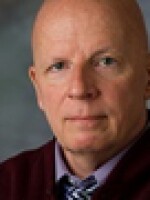Time is running out for New York residents opposed to erecting high-voltage power towers across the scenic Hudson Valley to weigh in.
The Public Service Commission under the direction of Governor Andrew Cuomo is expected to decide Thursday whether high-voltage power towers will be put up on a route taking transmission lines through the Hudson Valley. They've explored the idea, spurred by growing demand for electricity in Westchester and New York City, for more than 30 months.
Those opposed argue erecting the towers will negatively impact farms, towns, homes, the Hudson River, human lives and nature itself. Some of the lines proposed under New York’s Energy Highway initiative could be strung as high as 120 feet across seven counties.
Dr. Gideon Eshel, research professor of Environmental Physics at Bard College, says longtime studies show that the technology used to build the proposed towers is completely outdated and highly detrimental to health, the environment and the region’s economic future. 1 "The way we are going to redesign our infrastructure so as to optimally accommodate renewables so that we can actually meet the challenges that President Obama committed the country to in Paris last week, that's a major challenge. How do you optimally design the power network so that we will best connect sources with centers of consumption of power. The proposal on the docket right now is unquestionably one of the worst architectures possible connecting nowhere to nowhere, meaning connecting no source to no demand. That of course is total folly and absurdity."
In September, John Maserjian, spokesperson for both Central Hudson and New York Transmission Company,told WAMC their studies have shownenhanced transmission lines would alleviate congestion and hasten development of power sources in western New York by providing a path for power to reach load centers through central New York. And buried is not necessarily better. "Transmission lines, due to their nature, cannot be buried for long distances. The buried lines are very, very expensive and would cost New York residents more money than the benefits they would provide. We propose an overhead solution that the Public Service Commission is looking to advance that would accomplish two things. First, it would address aging infrastructure by removing a set of 80-year-old transmission lines that run through the Hudson Valley and replace them with a streamlined monopole line, actually with a lower footprint than the existing line. So, we feel this would provide an aesthetic benefit, it would address aging infrastructure and at the same time alleviate congestion in the transmission system."
Eshel is unmoved. He says the lines will hit the average person where it hurts most: the wallet. He envisions a dramatic increase of electric rates fueled by cost overruns he imagines as inevitable. And Eshel fears a larger impact: "The most troublesome element is that here is a very complicated and subtle scientific problem addressed like a elephant in a china shop by people who are utterly incompetent in terms of the technical skills that are necessary in order to actually build this. It's a very important and very interesting problem and the governor and the entire state bureaucracy is hopelessly unable technically to deal with this challenge."
Jim Denn with the New York State Public Service Commission says the agency has been committed to fully addressing environmental and community group concerns. "After numerous studies and public meetings, the department has determined that transmission upgrades are in fact needed to reduce historic congestion on the state's electric grid, and the proposed transmission lines would stay entirely within the existing transmission right of way. To meet the state's clean energy goals, it is essential that we have a strong transmission backbone, and this proposal meets that need."
Activist and Hudson Valley resident Adrienne Elisha, daughter of the late WAMC commentator Paul Elisha, says opponents have an 11th-hour option. "While solving the conundrum of the energy issue is much needed, this proposed project is clearly not the answer. We need solutions which are forwardly functional rather than backwardly obsolete. So it's very important that we say no to the progress of this project."
Contact Governor Andrew Cuomo: by phone 518-474-8390 ---or email via governor.ny.gov







